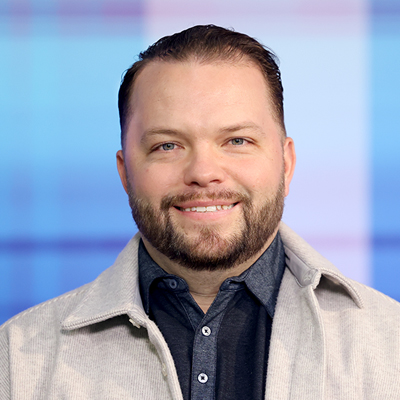
Texas A&M commitment Jackson Cotton takes batting practice on day three of the Dream Series at Tempe Diablo Stadium. (Photo by Josh Amick/Cronkite News)
TEMPE – Sixteen years after Jackie Robinson’s cleats touched the diamond at Ebbets Field, Martin Luther King Jr. was still advocating for equal rights for Black Americans when he stood on top of the Lincoln Memorial’s marble steps in 1963 and delivered his historic “I Have a Dream” speech.
That same speech was blaring through the speakers at Tempe Diablo Stadium at the Dream Series, an event where MLB and USA Baseball host the nation’s top predominantly Black and Latino high school players and invite them to learn from some of the game’s greatest advocates over the MLK holiday weekend.
“We hold the Dream Series event in Arizona every year on this weekend because Arizona was the last state in the country to recognize Martin Luther King Jr. Day as a holiday,” said Tony Reagins, MLB’s chief baseball development officer.
The Dream Series is always the first program to start the new year for MLB after the previous year is spent at identification camps. MLB goes to 18 cities that have significant Black populations and scouts players to invite to future camps.
It also hosts more than 11 youth camps, the Hank Aaron Invitational, the Breakthrough Series and The Program, a 30-day camp where 40 players travel to Vero Beach in Florida and train with former MLB players for a month, learning what a day in the life of a professional player looks like.
“It’s interesting to see people who look like me out on the field, out in the stands and the coaches,” Scottsdale Christian Academy’s Owen Kendrick said. “It’s crazy to see a bunch of African Americans play this game over MLK weekend.”
Kendrick is the son of former 15-year MLB veteran Howie Kendrick, who joined the Dream Series coaching staff last year.
“My dad wants to help move the game forward,” Kendrick said. “He has had people throughout his career pour into him and he wants to continue to pour into others.”
Part of the challenge of moving the game forward is that today’s game features few Black players.
Only 59 black MLB players were featured on Opening Day rosters last year out of a possible 945, roughly 6.2%, according to MLB.com. This was the lowest number since 1955, eight years after Robinson broke the color barrier in 1947.
MLB is trying to combat these low numbers and has developed numerous programs and strategies to encourage Black players to play baseball throughout the year. The programs start for incoming freshmen and have multiple camps available for them until the time they graduate.
The bigger problem might be addressing an ongoing systematic issue within this country: income inequality.
From 1967-2002, black households have had the lowest average annual income of any other race, according to the U.S. Census. In 2022, it is still the case with white families averaging more than $27,000 more than Black households annually.
These numbers directly coincide with an increasing price to play youth baseball. The average cost of travel ball is $3,700 per player, according to USA Today. This does not include equipment, out-of-state tournaments or training services.
That reality makes these programs created by MLB and USA Baseball so vital to the sport. Over their year long 18 city tour, they are identifying athletes in lower income areas who do not have the proper recognition and give them a chance to learn from some of the game’s greatest former players, free of charge.
“There are a lot of talented kids (at the Dream Series) who would get overlooked because they don’t have the money or the funding to play travel ball,” said Danny Lewis, the father of ASU commit Brenden Lewis. “This gives them another avenue to even the playing field.”
Although the low numbers of Black baseball players in MLB is concerning, the developmental programs have seen an increase in participation since Reagins joined the commissioner’s office in 2015. In the Dream Series’ inaugural season in 2017, they had to recruit players to compete in the camp, and this year they had to turn kids away due to the increasing number of participants.
“The Breakthrough Series was designed to create more opportunities for specifically African American players and we use the Breakthrough Series as a model to expand the younger programs like the Dream Series and Hank Aaron Invitational,” Reagins said.
“These are all programs that are designed to increase African American participation in our sport and identify high level athletes who could play D1 baseball, minor leagues or MLB.”
The Dream Series has produced 12 first round picks with some of the other players committing to the nation’s top college baseball programs.
Among those players is Brenden Lewis, a shortstop and pitcher from Santee, California. Lewis was invited to the Dream Series after participating in the Hank Aaron Invitational the past two years.
“The Dream Series has helped me most on the mental side of the game,” Lewis said. “In the past couple of months, I have been really hard on myself and not having the self confidence I used to have.
“Coming here, learning from the coaches has bettered my confidence and going back to my high school I feel like I can be a better leader for my baseball team.”
While the number of Black participants in baseball have steadily declined over the years, the increase in size at the developmental camps and the alumni drafted from these programs should be encouraging. MLB hopes the future of America’s pastime will more accurately reflect the nation’s makeup.
“There are not a lot of African Americans in the MLB, but if we bring the younger generation up and stick together, those numbers are going to jump up,” Lewis said.
